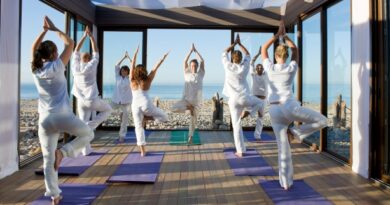Abhyanga – The Most Amaxing Massage Of Ayurveda
Ayurveda, also known as the science and art of life, is a guide and blueprint for achieving balance in body, mind, and spirit.
Ayurvedic treatment, diet, and lifestyle recommendations are tailored to the individual.
Thomas Edison said, “The doctor in the future will not give medicine, but will be interested in their patients in the care and diet of the human body and the prevention and treatment of disease.”
The Daily Routine Called Dinacharya
Ayurveda suggests practicing a daily routine (called Dinacharya) to keep your body young and mind clear. A part of this daily routine, Abhyanga is a form of Ayurvedic self-care that involves massaging your body with warm herbs-infused oils.
Oil is often pre-mixed to specific conditions with herbs. The Abhyanga Massage is a part of the Dinacharya as specified in the Brhat Trayi or Laghutrayi series of Ayurvedic textbooks to maintain good health.
Ayurveda practitioners are well aware that Abhyanga improves joint health, nourishes the body’s tissues, and restores balance to aggravated doshas. It improves the condition and appearance of brittle, dry hair.
Abhyanga is a part of Panchakarma therapy, the well-known Ayurvedic detoxification treatment, and rejuvenation.
Swedana therapy (sweating), or a warm bath, is often followed. One or more therapists may perform Abhyanga in synchronization. However, it can also be performed by an individual.
Abhyanga’s Benefits
The Abhyanga, as it is described in the Brhtatrayi or Laghutrayi texts, is a powerful message that is meant to open the minor Srotas, eliminate ama accumulations (toxins), melt kleshma, which is fat secretions blocking the Srotas, and cleanse and moisturize the skin.
Abhyanga can be used to calm Vata imbalances. This will allow for deep relaxation and peace of mind.
Abhyanga can nourish and strengthen the body, stimulate our internal organs, increase blood circulation and reduce vata.
The Oils Of Abhyanga Massage
The oil used will vary depending on the season or individual constitution.
Make sure the oil is not old or deteriorating. In a bowl, place 1/4 to 1/2 cup of oil.
Warm black sesame seed oil is recommended for Vata. Warm coconut oil is recommended for Pitta and warm mustard oil for Kapha.
Heat the oil in a saucepan of hot water until it is warm to the touch. Do not heat directly.
Apply the oil to your entire body. The warm oil should be applied to the entire body. Apply the oil to the scalp daily. This will encourage happiness and prevent baldness, premature graying, headaches, and receding hairlines.
Oiling your feet can help you sleep better and keep your skin soft.
The Amazing Abhyanga Massage Of Ayurveda (Blog 5) 6
These steps should be followed.
Apply the oil to your entire body. Start to massage at your extremities and work your way up. Long strokes on your limbs and circular strokes for the joints. Use broad circular movements that are counterclockwise to massage the abdomen and chest.
Follow the path of the large intestine on your abdomen. Move up on the right side, cross, and descend on the left.
You can massage the body for between 10 and 15 minutes. Practice the technique with patience and love.
Massage the oil into your scalp and ears with a little more attention. Do this at least once per week.
Oil should be applied to the head warm but not hot.
After you finish your Abhyanga, you can take a warm shower or bath to remove any oil from your skin. After you finish your shower or bath, you should still have some oil on your skin. The skin will absorb it.


